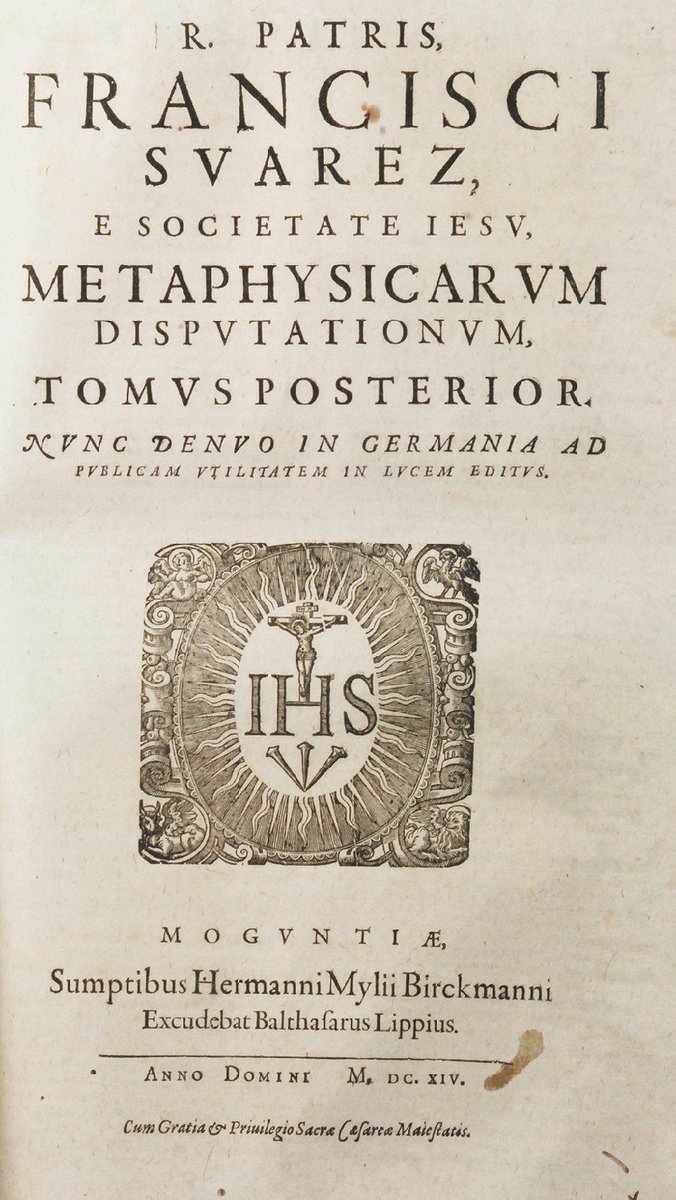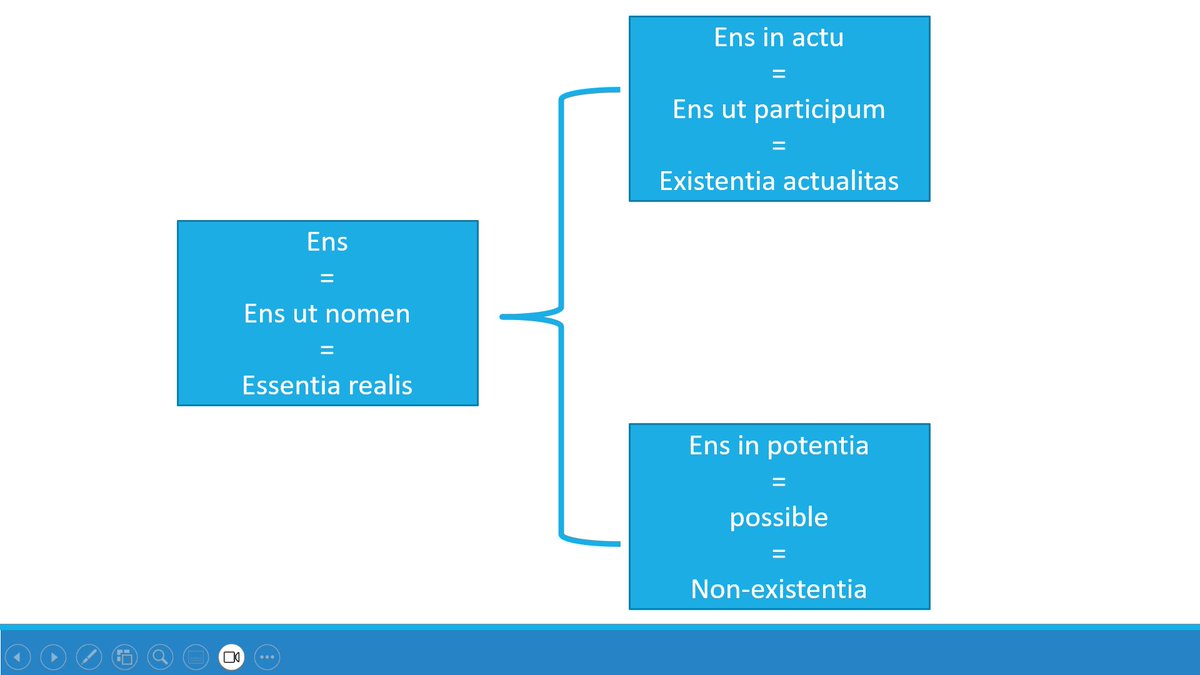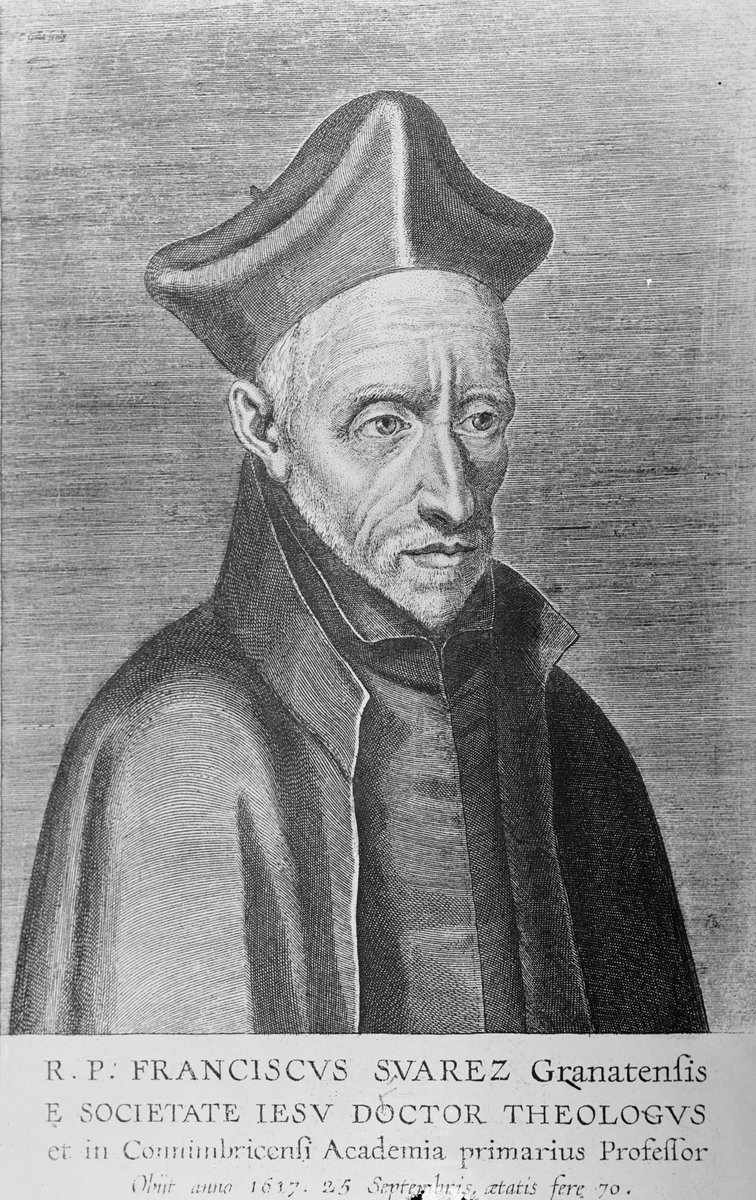A brief introduction to the METAPHYSICS of FRANCISCO SUAREZ pt. 1 (maybe?):
The object of Metaphysics🧵
(Sources at the end)
1/24
The object of Metaphysics🧵
(Sources at the end)
1/24

A) Formal Determination.
In his magnus opus, the "Disputationes Metaphysicae" (Metaphysical Disputations), the jesuit scholastic theologian Francisco Suarez determines the object of the metaphysical science in a formal way.
2/24
In his magnus opus, the "Disputationes Metaphysicae" (Metaphysical Disputations), the jesuit scholastic theologian Francisco Suarez determines the object of the metaphysical science in a formal way.
2/24
Trying to find a middle ground between other scholastic positions, Suarez comes to the conclusion that Metaphysics treats being, insofar as it is real being. This includes substances, accidens, finite (material and inmaterial) and infinite beings (cf. DM I, Sect. 1).
3/24
3/24
It excludes, however, purely accidental things (like a cairn) and beings of reason (like Chimeras).
4/24
4/24
B) Material Determination.
In the second disputation, Suarez treats the "ratio" (latin for "content" in this case) of the concept of being. Only by narrowly defining this, one can then proceed to examine the propierties and causes of being.
5/24
In the second disputation, Suarez treats the "ratio" (latin for "content" in this case) of the concept of being. Only by narrowly defining this, one can then proceed to examine the propierties and causes of being.
5/24
B.1.) Division of concepts.
He then quickly moves on to divide all concepts into formal and objective concepts. (cf. DM II, Sect. 1,1) Formal concepts are always positive and singular entities, since they are the activity and product of the mind by which it knows something.
6/24
He then quickly moves on to divide all concepts into formal and objective concepts. (cf. DM II, Sect. 1,1) Formal concepts are always positive and singular entities, since they are the activity and product of the mind by which it knows something.
6/24
Objective concepts on the other hand, are those things known by such formal concepts. They are the known material of the mind's activity. Objective concepts can be singular (when we know a particular thing), but they can also be universals, common things or beings of reason.
7/24
7/24
As we should expect, Suarez explains that it is the objective (and not formal) concept of being that which we are trying to define in this Disputation, since we are trying to determine the obect of the science of being.
8/24
8/24
(What an objective concept even is and what it's ontological status is is a matter of much controversy. I may even write my thesis on that topic alone. For now, what is important is that the OC can refer to an aspect shared by many realites and not only to a single entity)
9/24
9/24
What is then the content of this objective concept of being? What is known when we apprehend something as having real being?
10/24
10/24
B.2.) The meaning of being (cf. DM II, Sect. 4, 3-7.)
"Being" can sometimes signify the participle of the verb "to be" (ens ut participium). In this case, "being" means the exercised existence of something. When something actually exists, we say it has "being".
11/24
"Being" can sometimes signify the participle of the verb "to be" (ens ut participium). In this case, "being" means the exercised existence of something. When something actually exists, we say it has "being".
11/24
But "being" can also be taken as a "name" (ens ut nomen) that signifies the "real essence" of something that has or can have existence.
It is this second sense of "being" the one that Suarez chooses for his entire metaphysical project.
12/24
It is this second sense of "being" the one that Suarez chooses for his entire metaphysical project.
12/24
But what is a real essence? Well, an essence is the first principle of the operations and properties of something and that which is expressed through the definition of the thing.
13/24
13/24

That the essence is "real" can be described in multiple forms:
a. Negatively: A real essence (RE) is an essence which doesn't involve contradiction and is not "made up" by the intellect (like beings of reason).
14/24
a. Negatively: A real essence (RE) is an essence which doesn't involve contradiction and is not "made up" by the intellect (like beings of reason).
14/24
b. Positively.
b.1. A posteriori: A RE is the one that is the principle of operations or effects of a thing.
b.2. A priori: A RE is an essence that can be produced by God (although this only applies to created essences, since God has real essence but isn't created)
15/24
b.1. A posteriori: A RE is the one that is the principle of operations or effects of a thing.
b.2. A priori: A RE is an essence that can be produced by God (although this only applies to created essences, since God has real essence but isn't created)
15/24

What does this all mean? Suarez sums it up nicely: A real essence is one essence that is apt/suitable to exist. A real essence is oriented towards existence, it doesn't "repel" existence.
And this is the aspect of reality that Metaphysics examines.
16/24
And this is the aspect of reality that Metaphysics examines.
16/24
One last thing: It is important to note that Suarez wants to avoid making "potential" being the object of Metaphysics. He categorically denies this (cf. DM II, Sect. 4, 8-12). While "ens ut participium" *does* mean *actual* being, "ens ut nomen" does *not* mean *potential* being.
The concept of potential being *excludes* actual being. Potential being is *not* actual. The being signified by the real essence does not deny the actual existence of such being. It merely *abstracts* from it.
18/24
18/24
The "ens ut nomen" abstracts from both actual and potential being and is indifferent to both alternatives, containing them in a "confused" or non-clear way. A real essence is some being that could be actual or could not yet be actual, it doesn't prefer one over the other.
19/24
19/24

C. The End
I think Suarez is trying to achieve a couple of things with this definition of Metaphysics. But most importantly, he wants Metaphysics to be a coherent science. For that, he needs a single concept and a single object which unifies the whole system of knowledge.
20/24
I think Suarez is trying to achieve a couple of things with this definition of Metaphysics. But most importantly, he wants Metaphysics to be a coherent science. For that, he needs a single concept and a single object which unifies the whole system of knowledge.
20/24
This science has to include God, creatures, substances, accidens, etc. But to accomplish this, he has to find some common ontological ground between all these different entities. He is therefore forced to abstract from all these particular dimensions of being...
21/24
21/24
in order to find a notion that refers to an aspect of reality general enough to include all of them.
This notion is the concept of real essence, which naturally ends up being a really obscure and broad notion, which amounts to a mere aptitude or non-repugnancy to actual existence
This notion is the concept of real essence, which naturally ends up being a really obscure and broad notion, which amounts to a mere aptitude or non-repugnancy to actual existence

SOURCES
For the Suarez text, I used the spanish translation with the latin original that you can find here:
For the latin text alone, go here:
https://t.co/87lxIVuXtA
23/24archive.org/details/franci…
archive.org/details/rpfran…
For the Suarez text, I used the spanish translation with the latin original that you can find here:
For the latin text alone, go here:
https://t.co/87lxIVuXtA
23/24archive.org/details/franci…
archive.org/details/rpfran…
Used to a lesser extent was this article:
And a good and short intro to Suarez's Metaphysics:
https://t.co/GxR1creuGN
24/24brill.com/display/book/9…
brill.com/display/book/e…
And a good and short intro to Suarez's Metaphysics:
https://t.co/GxR1creuGN
24/24brill.com/display/book/9…
brill.com/display/book/e…
Please like and share if you liked the thread! And feel free to comment your opinions/critiques. If people like this, I may write more parts.
• • •
Missing some Tweet in this thread? You can try to
force a refresh

 Read on Twitter
Read on Twitter




